In Photos: Amazing Ruins of the Ancient World
Step Pyramid of Djoser
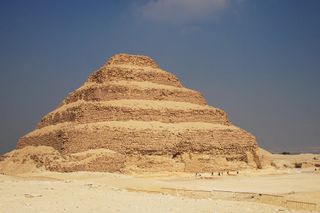
The first pyramid ever built by the Egyptians, Djoser rises up 197 feet (60 meters) with six steplike layers, one built on top of the other. The pyramid was constructed at Saqqara about 4,700 years ago. Beneath the pyramid lies a labyrinth of tunnels extending 3.5 miles (5.5 kilometers). At the labyrinth's center is a 90-foot (28-meter)-deep shaft containing the burial chamber of Djoser, king of Egypt's third dynasty. Fragments of Djoser's granite sarcophagus have been recovered during recent conservation work.
"The construction of the step pyramid would see the beginning of an ambitious pyramid building program that would culminate with the Great Pyramids at Giza," writes LiveScience contributor Owen Jarus. [Read more: Step Pyramid of Djoser]
Pyramids of Giza
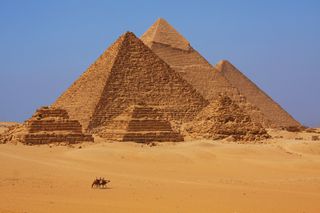
The Giza pyramids — Khufu, Khafre and Menkaure — were constructed between 2589 B.C. and 2504 B.C., though scientists still debate how exactly they were erected. Once built, the Giza pyramids were encased in white limestone, most of which has worn away.
The pyramids were most likely used as the resting places for their respective kings. The grave goods once located inside the pyramid complexes would have helped the kings ascend to the afterlife. [Read more: Pyramids of Giza]
Easter Island
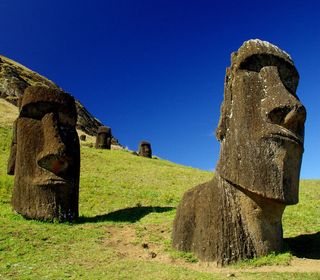
Rapa Nui, or Easter Island as the Europeans named it, is not big, spanning just 14 miles by 7 miles (22 by 11 kilometers) at its farthest points, but it holds quite a bit of culture and mystique. The island, located in the southeast Pacific Ocean, is home to some 1,000 human-faced statues called moai — the moai rise up 40 feet (12 meters) and weigh a whopping 75 tons or so.
How the behemoths moved from the quarry where they were carved to their current location is steeped in mystery, with a recent study suggesting the statues "walked." People could have rocked the statues back and forth (as one might move a washing machine or stove) and walked them the several miles. [Read more: Easter Island]
Angkor Wat

Angkor Wat, built between A.D. 1113 and 1150 by king Suryavarman II, is one of the largest temple complexes ever erected. Initially a Hindu temple dedicated to the god Vishnu, Angkor Wat was converted in the 14th century to a Buddhist temple. At the center of the complex, a tower rises up 213 feet (65 meters), with four smaller towers and enclosure walls surrounding it.
Angkor Wat's full purpose is still debated, with some suggesting Suryavarman II's ashes were interred there, making it a funerary temple. Others suggest its alignment gives it astronomical significance. [Read more: Angkor Wat]
Petra: Ancient City of Rock
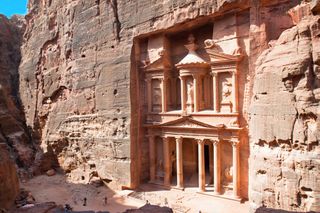
Literally carved into red-desert cliffs southwest of modern-day Amman, Jordan, the ancient city of Petra was the capital for the Nabataeans until its annexation in A.D. 106. Though occupied in the Middle Ages, Petra was hit by a series of earthquakes and was eventually abandoned. Today, its ancient architecture, including numerous ancient tombs and temples, and natural aesthetic attract tourists across the globe. Contrary to its portrayal as the backdrop of "Indiana Jones and the Last Crusade," Petra is not located in the canyon of the crescent moon, nor does it hold the Holy Grail. [Read more: Petra - Ancient City of Rock]
Machu Picchu
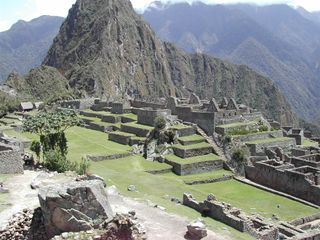
A 15th-century Ican site, Machu Picchu rises some 7,970 feet (2,430 meters) above sea level along the eastern slope of the Andes in Peru. Scientists think Pachacuti Inca Yupanqui, the ninth ruler of the Inca, built the structures in the mid 1400s. And while there are no signs it served military purposes, several spiritual structures reside there, including the Temple of the Sun, the Principal Temple and the Temple of the Three Windows. Possibly the most mysterious, a giant rock called "the Intihuatana" is situated on a raised platform towering above the plaza. [Read more: Machu Picchu]
Tikal
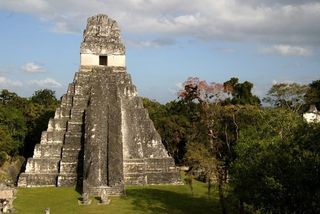
Located in what is today Guatemala, the ancient city of Tikal flourished from about 600 B.C. to A.D. 900, at which time it collapsed mysteriously along with much of the Mayan world. Several theories have been put forth, including drought, to explain the Maya demise. While it flourished, Tikal saw more than two-dozen pyramids erected, driven in part by the famous Mayan calendar. For instance, beginning as early as A.D. 672, twin pyramids were built, coinciding with the end of every every K’atun (20-year period). [Read more: Tikal - Capital of Mayan Civilization]
Sign up for the Live Science daily newsletter now
Get the world’s most fascinating discoveries delivered straight to your inbox.
Cahokia

The pre-Columbian settlement at Cahokia was the largest city in North America north of Mexico, with as many as 20,000 people living there at its peak, between A.D. 1050 and 1200.
Though much of it is buried beneath highways and other 19th- and 20th-century infrastructure, a suite of cultural and architectural remains reveal a vibrant ancient city. For instance, Monks Mound towers 100 feet (30 meters) over the city, with giant postholes suggesting a temple once sat at its top. South of Monks Mound, a 10-foot (3-meter)-tall structure called Mound 72 holds the remains of 272 people, many of them sacrificed. [Read more: Cahokia - North America's First City]
Stonehenge
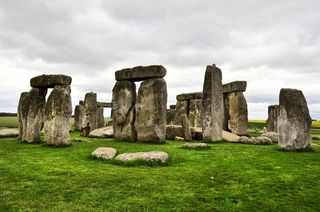
Stonehenge, a prehistoric monument near modern-day Salisbury, England, consists of huge sarsens — up to 30 feet (9 meters) tall and weighing some 25 tons (23 metric tons) — and smaller "bluestones," which appear bluish when wet. People began to build the sprawling structure about 5,000 years ago, with major construction ending about 4,300 years ago.
Scientists are still puzzled as to why the monument was erected, though ideas include: a way to mark the winter solstice, and a way to commemorate local leaders buried there. [Read more: Stonehenge]
Carthage
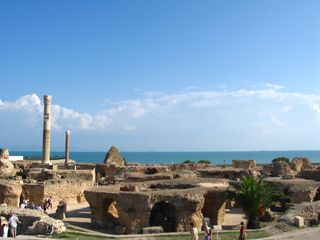
Located in modern-day Tunis in Tunisia and founded by the seafaring Phoenicians, the ancient city of Carthage was a major center of trade and influence in the western Mediterranean. Archaeological evidence suggests the site was occupied as early as 760 B.C. The city, and its peoples, fought several wars against Rome (called the Punic Wars), ultimately leading to the downfall of Carthage in about 146 B.C. [Read more: Carthage - Ancient Phoenician City-State]
Most Popular




